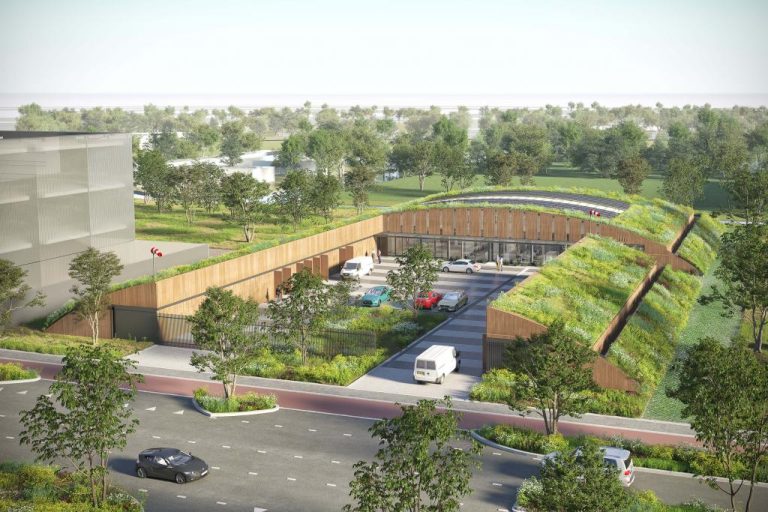Ecological timber building for gas storage

The new gas warehouse has plenty of daylight, natural ventilation and a high degree of transparency. (Image: cepezed)
The Logistics and Environment Services of TU Delft will get a special new accommodation at the far end of Mekelweg next year. With its wooden facade and green curved roof, the gas and chemical storage facility will have a very different look from the present nondescript sheds on Anthony Fokkerlaan, near the LR building.
Eighty percent of the materials have been reused and/or biobased, says architecture firm cepezed. For instance, the main load-bearing structure of the roof is made of wood and the sand-lime brick of the inner and outer walls is reused.
Solar panels will be installed on the roof for the energy supply, while the planting on the roof and slope will contribute to the nature-inclusiveness of the project. Retention crates have been incorporated into the ground around the building. The aim is to realise the building without discharging rainwater into the sewer system, cepezed says.
Do you have a question or comment about this article?
j.w.wassink@tudelft.nl

Comments are closed.